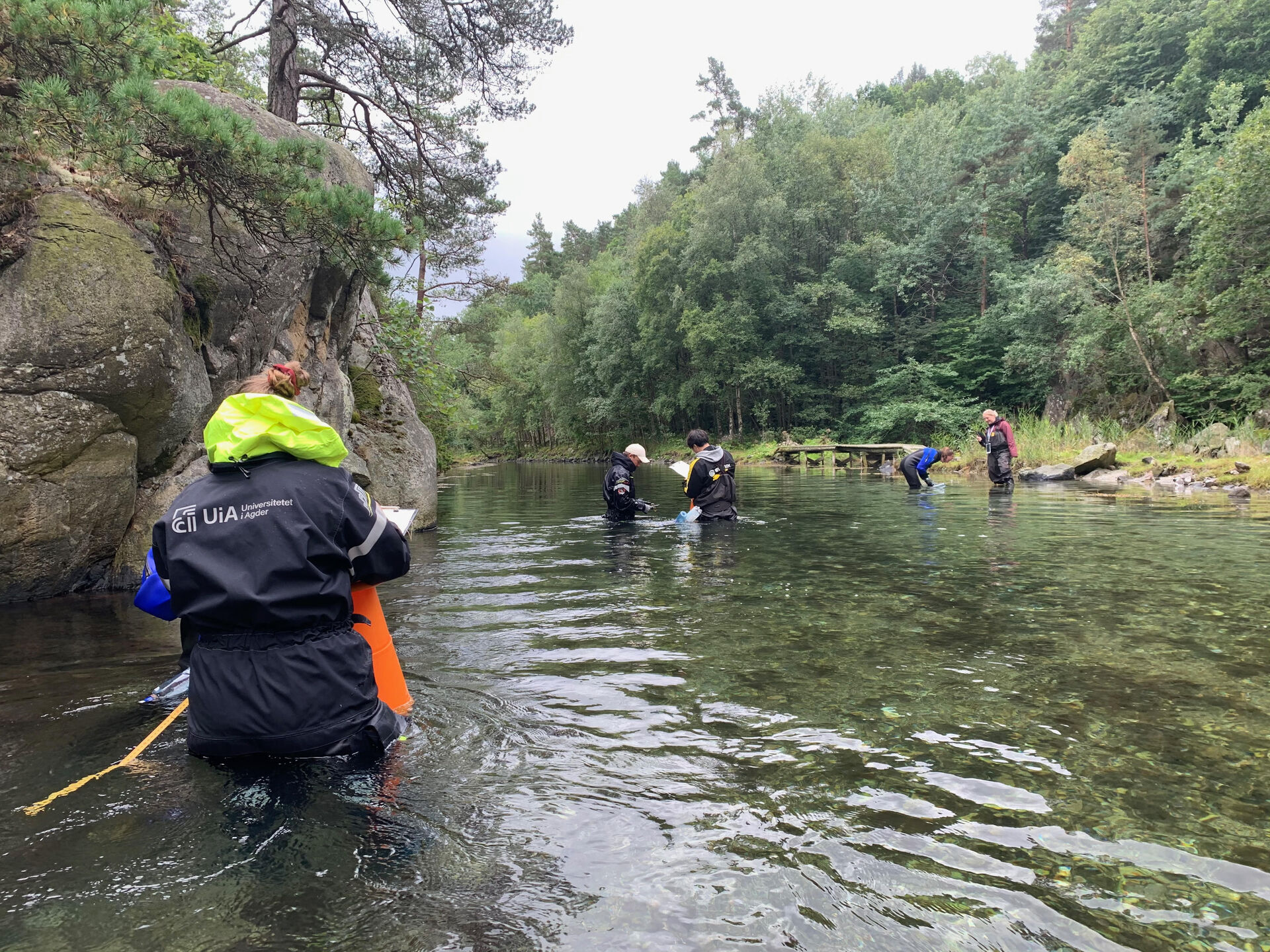“Let me show you something.”
Professor Ane Timenes Laugen takes some things from the windowsill in her office at UiA. She holds up various specimens of Pacific oyster shells.
“We found this long one in a bay in Kristiansand. They had piled up and grown in large clumps until forming a reef. In fact, Pacific oysters can become so invasive that they have been shown to alter the water flow in some areas,” she explains.

A natural consequence is that water and oxygen conditions can change.
Invasive species
When you call the Pacific oyster an invasive species, the name explains that it does not originally belong in Norwegian waters. In summer, people may associate it with bleeding feet after an unfortunate step. Some shells almost have a razor-sharp surface, which has led to major clean-ups in bathing areas.
One issue that has received a lot of media attention is how it may pose a threat to biodiversity - and the fear that it will outcompete the native flat oyster and mussel.
But it’s not all bad according to Timenes Laugen:
“We have seen, for example, that mussels can use beds of Pacific oysters as their habitat or increase their survival by hiding among larger Pacific oysters. The same also applies to other marine animals and plants. It is exciting to observe the biological changes in Vadehavet for example, where it has shifted from complete takeover to coexistence.”
New areas of use
In a report from 2022, the professor and her co-authors point to the potential the Pacific oyster brings when it can no longer be fought. The article is part of the project ‘Harvesting of Pacific oysters’, which is funded by the Nordic Council of Ministers.
In the reports included in the project, the main focus is on Pacific oysters as a source of food. Alternative areas of use can be raw material for feed and food production, and the shells can be used for building and road materials, soil improvement or lime in poultry production.
The question is how realistic it is to achieve production on a large scale, the researcher underlines.
“We’ve also collaborated with artists in Sweden who want to process the shells into burnt lime for use in art and interiors. It will be exciting to see how that progresses,” Timenes Laugen says.
Friend or foe?
The researchers encourage the recognition of the ecosystem services the Pacific oysters provide, and a more pragmatic approach to the species.
Lead author Stein Mortensen summarizes it as follows:
“The Pacific oyster is a new Nordic resource. In order to take advantage of the potential this species provides, it is necessary and appropriate to find ways to utilise it optimally, both as a source of food and as raw material for other uses. This is only possible if we balance the different interests, we should seek to increase the value of the oyster and recognise the positive ecosystem services the species provides, even though the species is considered invasive.”
The report prepared by the experts gives a very comprehensive list of advantages and disadvantages which has been delivered to decision makers.
“We believe it is important to manage the species dynamically; measures that are appropriate where the species is well established should be different where it is newly established,” Timenes Laugen says.
Parasites are also monitored
Parasites are a factor that researchers will be closely monitoring in the times ahead.
“I'm going to open 25 Pacific oysters lying at home that I’ll check for a parasite that was detected this spring. A new species usually brings with it new parasites, and that's one of the things we'll be keeping an eye on.”
The parasite burrows into the shell of the Pacific oyster and is difficult to detect until it is opened. There it creates blisters that consist of mud and the parasite’s faeces and naturally unappetising.
Facts about the Pacific oyster - Crassostrea gigas (Magallana gigas)
- One of the world's largest farmed species since the 60s
- Has spread in Nordic waters since 2006
- The species is spreading steadily north along the Norwegian coast. Currently, the northernmost point is Smøla, according to artskart.no
- Spreads through larvae carried by ocean currents, originally from farming in France, Belgium and the British Isles
- Pacific oysters taste best in winter when they are not reproducing, and the water is colder
Natural filtration
For the researchers, there are plenty of interesting uses to consider in the future.
“From Kristiansand to Gothenburg, there are incredible amounts of Pacific oysters. We have not yet, for example, studied whether the natural filtering properties of oysters can counteract eutrophication.”
Eutrophication is the result of nutrient runoff from agriculture, which affects the water quality and living conditions of species in the ocean.
Oysters are a low trophic species. This means that it is far down the food chain; it obtains its nutrients by filtering water through their system. Low trophic species can form part of a more sustainable diet, but in this context, the filtration itself is interesting.
“Imagine if all the tons of Pacific oysters that are still in our coastal waters help to reduce eutrophication,” Ane Timenes Laugen wonders.
